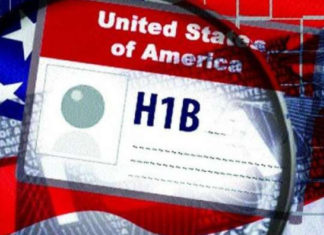Family visa is granted to the family members of a lawful permanent resident in the US. A lawful permanent resident is a foreign national who has migrated to US and was granted the privilege of permanently living and working in the United States. To become a lawful permanent resident based on the fact that you have a relative, who is a citizen of the United States or is a lawful permanent resident, your relative in the United States will have to sponsor you and prove that he / she has enough income or assets to take care of you.
Your relative sponsor and you, the intending immigrant, must successfully complete certain steps in the immigration process in order to come to the United States.
The USCIS has to approve an immigrant visa petition, I-130 Petition for Alien Relative filed by the sponsoring relative for you. Most sponsors will have to demonstrate their adequate income or assets to support the intending immigrant and accept the legal responsibility for financially supporting their family member, by completing and signing a document called an Affidavit of Support.
Once this documentation is complete, the intending immigrant can apply for the immigrant visa.
Overview on Family-Based Immigrant Visas
Two groups of family based immigrant visa categories, including immediate relatives and family preference categories, are provided under the provisions of United States immigration law, specifically under the Immigration and Nationality Act (INA).
Immediate Relative Immigrant Visas (Unlimited): These visa types are based on the close family relationship with a United States (U.S.) citizen described as an Immediate Relative (IR). The number of immigrants in this category is not limited for each fiscal year.
Immediate relative visa types include:
IR-1: Spouse of a U.S. Citizen
IR-2: Unmarried Child Under 21 Years of Age of a U.S. Citizen
IR-3: Orphan adopted abroad by a U.S. Citizen
IR-4: Orphan to be adopted in the U.S. by a U.S. citizen
IR-5: Parent of a U.S. Citizen who is at least 21 years old
Family Preference Immigrant Visas (Limited): These visa types are for specific, distant family relationships with a U.S. citizen and some specified relationships with a Lawful Permanent Resident (LPR). There are fiscal year numerical limitations on family preference immigrants.
The family preference categories are:
Family First Preference (F1): Unmarried sons and daughters of U.S. citizens, and their minor children, if any. (23,400)
Family Second Preference (F2): Spouses, minor children and unmarried sons and daughters (age 21 and over) of LPRs. At least seventy-seven percent of all visas available for this category will go to the spouses and children; the remainder is allocated to unmarried sons and daughters. (114,200)
Family Third Preference (F3): Married sons and daughters of U.S. citizens, and their spouses and minor children. (23,400)
Family Fourth Preference (F4): Brothers and sisters of U.S. citizens and their spouses and minor children, provided the U.S. citizens are at least 21 years of age. (65,000)
Note: Grandparents, aunts, uncles, in-laws and cousins cannot sponsor a relative for immigration.
Numerical Limitations for Limited Family-Based Preference Categories
Whenever the number of qualified applicants for a category exceeds the available immigrant visas, there will be an immigration wait. In this situation, the available immigrant visas will be issued in a chronological order in which the petitions were filed using their priority date.
The filing date of a petition becomes, what is called the applicant’s priority date. Immigrant visas cannot be issued until an applicant’s priority date is reached. In certain categories, with many approved petitions are compared to available visas, there may be a waiting period of several years, or more, before a priority date is reached.
By Premji















































